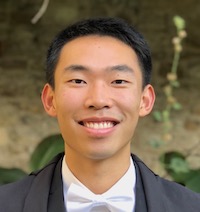We’ve been trusting Colorado’s COVID-19 numbers. Should we?
Leora Frankel | Apr 8, 2020
Some people gravitate to numbers, noticing them first, remembering them best. Among all the strange phenomena brought on by the novel coronavirus, the one that stands out for me is my 10-year-old son checking the pandemic numbers between rounds of schoolwork or exercise.
The numbers are mostly dark: the newly infected, the recently hospitalized, and the dead. The recovered patients also get a column. But that column doesn’t change fast in the U.S.; from what I can tell, the reason we’re deprived of cheerful figures is because two negative tests are required for a bill of health, and who can spare the tests?
Around the time I began paying attention to the new virus in China, in January, I was reading the book Narrative Economics by the Nobel Prize laureate Robert J. Shiller. It’s a slog. However, its theme was timely, as mathematical models of epidemics are central to the book. The simplest model was developed in 1927 by two Scots, William Ogilvy Kermack and Anderson Gray McKendrick. It is known as an SIR model, in which S refers to the susceptible, I to the infected and R to the recovered (presumed to be immune). As the models became more complex over the decades, categories piled up, to include births, deaths, superspreaders and even the gruesome unburied – and still infectious – dead.
These hitherto obscure models, all referred to by acronyms, are now the basis for extraordinarily impactful public policy decisions, such as Gov. Jared Polis’s most recent announcement extending the stay-at-home order until April 26. The Colorado Sun presented three models for our state, ranging from an optimistic “we’re past the peak” to “you ain’t seen nothin’ yet.”
Polling’s total of those tested is limited
These models tend to look impressive, relying on formulae that most of us are not familiar with. But what if we do not have sufficiently good data to populate the fields? Colorado is currently testing about 1,500 to 1,800 people a day for COVID-19. The pool of those tested, according to the Colorado Department of Health and the Environment (CDPHE), is limited almost exclusively to hospitalized patients (and those likely to be admitted), to healthcare workers and other first responders, and, finally, to some residents of senior living facilities. The number of new cases for the eight days of March 29 to April 6 fluctuated from 320 up to 445, and then down all the way to 222, suggesting a positive effect from social distancing that seemed almost too good to be true. What did these numbers and others mean?

How would he assess the quality of the COVID-19 data in Colorado?
“The raw case counts are likely to be biased by a variety of factors, including under-reporting, which can be caused by the state restricting tests to those with severe symptoms. There could be substantial mild transmissions,” Chen said. The data for hospitalizations and deaths in Colorado are more reliable, he added. At this point, most symptomatic hospitalized patients are presumably tested for the disease: the hospitals are not yet overwhelmed, so they are not turning away serious cases, and most COVID-19 deaths are likely occurring in a hospital setting. However, he added, “it’s hard to get a sense of the prevalence of the virus based on the hospitalization and death counts because of the lagged readout.”
While the limited scope of COVID-19 testing in Colorado would tend to lead to an underestimate of the spread of the disease, other weaknesses in the data could lead to overestimates. For example, when a spike in fatalities occurs in a senior living facility, the outbreak doesn’t necessarily indicate widespread community infection.

The daily numbers that so many people, including my son, are poring over, aren’t necessarily instructive. Anecdotally, I heard from a friend in the Boulder scientific community that local scientists (not specifically medical professionals) are bemoaning the lack of sampling. The thinking goes that without random testing in the community, we’re just stumbling along.
So, I reached out to State Rep. Jonathan Singer to ask him why testing in Colorado continues to be inaccessible. “I’m trying to get the answers too,” he told me. He had been on multiple calls on this subject that same day. The problems range from bureaucratic hurdles, as customs authorities hold up shipments of test kits from overseas, to quality control issues with some of the available kits, which are not up to standard.
“It’s a big deal that it’s not happening fast enough around the country,” Rep. Singer said. He learned from the CDPHE that the goal is to reach 5,000 tests a day in Colorado in the next week or two. The delays in developing and procuring tests on the federal level in February and March are still the primary cause of the restricted testing in Colorado, according to Singer. “We’re left to pick up the pieces.”
In such a data-driven age, it’s paradoxical that the numbers we most need are the numbers we can’t get.

Author Leora Frankel has written previously for Boulder Reporter on topics that have included the air-quality effects of fracking and the profit potential for developers of Opportunity Zones.


Hi Lynn,
Good question, I don’t have any information other than what has been made public. Based on an article in the Denver Post, it seems that there was an issue with labor (staff down 40%) and PPE supplies, as you said. The article says that this may be related to the company’s location in New York. https://www.denverpost.com/2020/04/07/san-miguel-county-colorado-coronavirus-covid-testing/
Try Bill (William) Masters on Facebook, San Miguel County Sheriff, or his office for that info on Telluride. Nice guy!
Michael must know about it. Even my neighbor who is not in the field knew!
Maybe Michael knows. I don’t think Jonathan knows about San Miguel Co. because he didn’t react to my chat on a webinar on the subject with Dougherty today.
I don’t have the contacts for those two.
A biotech associated with Telluride paid for serum testing in all of San Miguel County, the first place in the country, if not world, but the project in process was suspended today. Apparently because some part of the testing of the samples had to be done in NY and that company was affected by the SARS 2 itself. Labor or supplies inhibitions?
Anyone know more?
Real disappointed. Was looking forward to that!
Lynn 303-447-3216 24/7